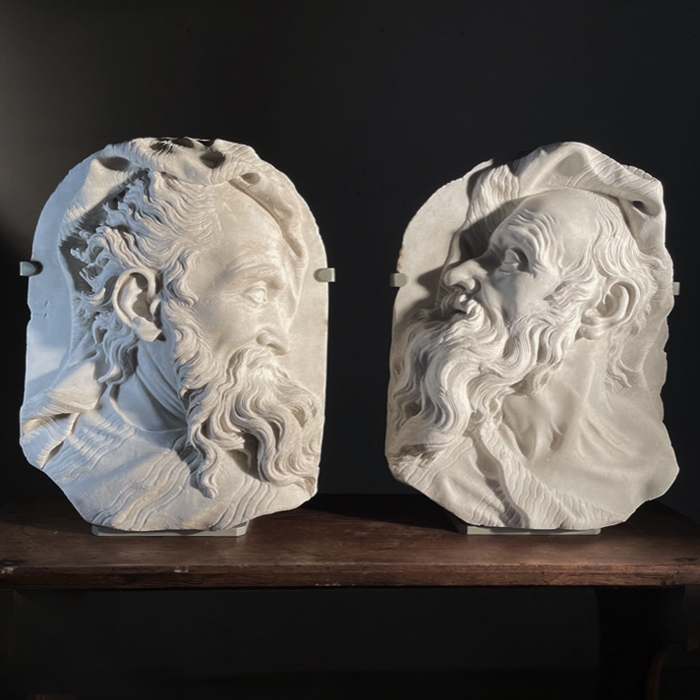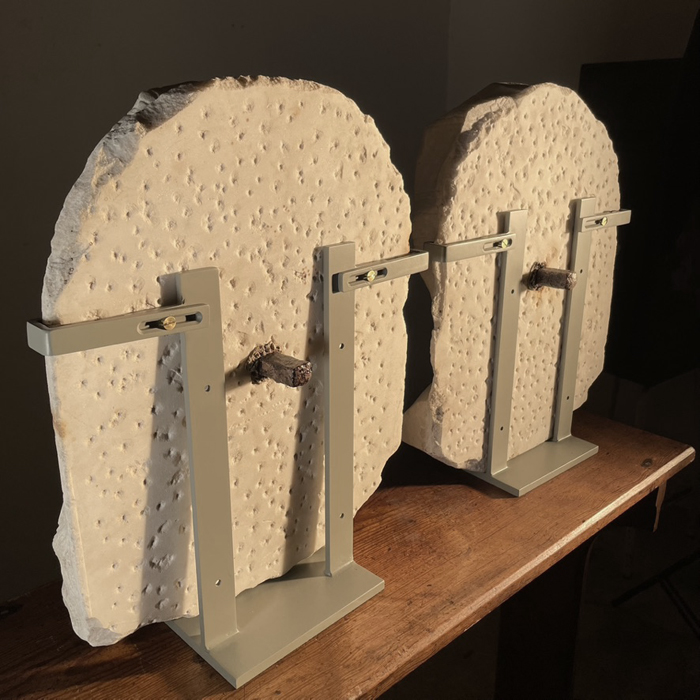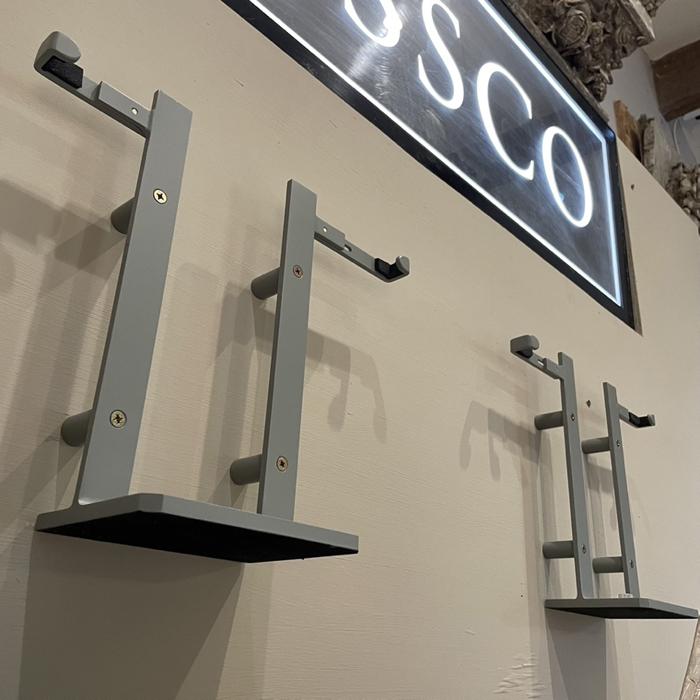posted on 01 Mar 2024
We had the privillage to design a stand that would work to wall mount and free stands these recently discovered pair of marble plaques.
We wanted to share their story here curtessy of our client Lassco. Please read their blog on them here

INTRODUCTION:
A wonderful discovery: a pair of 300year old Venetian carved marble plaques – Anthony Reeve, buyer at LASSCO Three Pigeons, tells all:
We’ve bought something rather special. It has taken a bit of work to discover exactly what we have got our hands on, but at every step of the way it has been a voyage of discovery.
It all started on a beautiful sunny day in a house in the New Forest, Hampshire. I was there to look through and buy some very interesting stained glass “hangers” – small round and diamond sections of leaded stained-glass stacked in a box, wrapped in old newspaper. A deal was done, and a cup of coffee was had, before heading-off to the next port-of-call, in Dorset. Before leaving though, as an after-thought, there were a couple of pots and other bits to have a look at, just outside the conservatory. By the fence, was a green plastic box and in it were two carved marble plaques. Each plaque was carved in relief with the profile of a bearded man – and they were beautifully carved too. The back of each plaque had a rusty old peg sticking out. They were slightly green with algae having been sat outside in the plastic crate for some time.
The vendor had said that they, the stained glass and the marble plaques, had belonged to their late grandfather – he had been an antiques dealer. But the time had come to sell them. After the stained glass deal I was a bit spent-out (it had all added up) but a subsidiary deal was done, the bearded men plaques were added to the haul, and off I went.
Back at base, Tom and I started to look into the history of both the plaques and of the antiques dealer that had owned them. We very carefully cleaned the marble. We had a museum display-stand company make some stands so the plaques can either be wall-mounted or securely stood upright. The more we looked at the wonderful carving and the more we looked for comparisons, the better it started to get.


We got some help from The Burrell Collection in Glasgow and found out more about the antiques dealer. Murray Adams-Acton was quite a character. He, it transpires, was one of the most successful dealers in medieval and early English furniture of his day. Together with his business partner Frank Surgey he salvaged and bought extraordinary things and sold them to the burgeoning American museums and elite private buyers found between-the-wars in London. Two of their customers are particularly noteworthy and Murray and Frank devoted much of their careers to helping them build their collections: in Glasgow, Sir William and Lady Constance Burrell and in California, William Randolph Hearst. The story of Murray Adams-Acton is told in Part I below. As it was Murray Adams-Acton who had owned the plaques, we were driven to dig deeper into the history of who might have made them and when.
Simone Guerriero is an Art Historian in Venice, specialising in the sculpture of the Veneto between the 17th and 19th Century. He has been involved in exhibitions of such sculpture and is widely published on the subject. We were stuck with our own research – we asked him to produce a report on the marble plaques. His report is reproduced below in Part II. It is wonderful to see how he arrives at his attribution, the tell-tale details and marks and influences and styles that enable him to put our sculptures alongside other works. He demonstrates exactly whose hand, with a “snappy and nervous character” chiseled out these plaques over 300 years ago: he firmly attributes the two plaques to the Venetian sculptor Francesco Penso, known as Cabianca, (1666-1737). The plaques most likely date to around 1710.
He explains what the image of the Philosophers – for that is who they are – meant to Venetians of the time and how it was a canon, a cult almost, which a number of Cabianca’s contemporary sculptors also explored.
Guerriero is able to detail much of Francesco Cabianca’s career and points to his work which can still be found today – in Venetian churches, Colleges, the Venice Arsenal and, after a series of busts he executed for Tsar Peter the Great, in Pavlovsk Palace near St. Petersburg. The work is fabulous – one cited commentary (by Camillo Semezato in 1966) opines about one of Cabianca’s reliefs that: you will not find “so much rhythmic continuity in any other Venetian sculpture of this period [with] so much skill in composition”. Guerriero himself concludes that “Cabianca was therefore certainly one of the greatest protagonists in the panorama of Venetian sculpture in the decades at the turn of the seventeenth and eighteenth centuries”. The report is translated and reproduced, in full, in Part II below.
The plaques are now available to purchase at LASSCO Three Pigeons – they can be seen on our website here. If you would like to receive this LASSCO News article as an email to read later, please contact 3pigeons@lassco.co.uk
see also